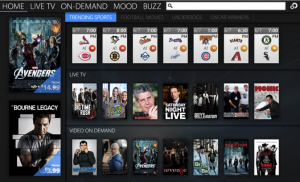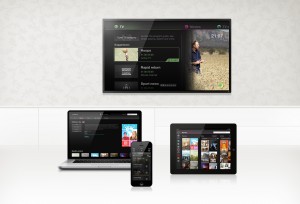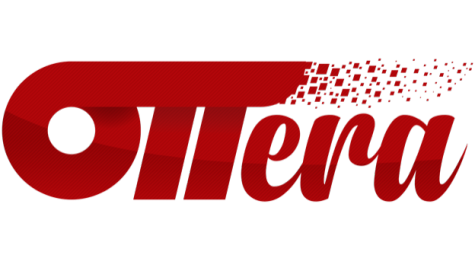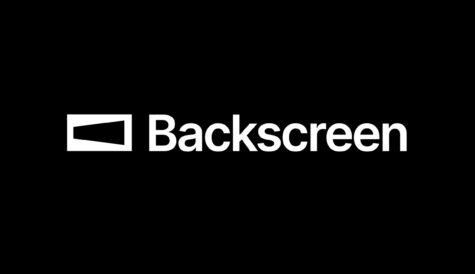Optimising search and recommendations
Unified content search is fast becoming an essential for TV viewers, but what difficulties remain when it comes to delivering search and recommendations and how are companies harnessing metadata and the social web to enhance their results? Andy McDonald reports.
Search and recommendation is a broad space that relies on many constituent parts to deliver a good experience to the end user. Metadata providers help to power effective results, platform providers offer a framework on which this can work and most importantly the operators provide the content that viewers are searching for in the first place.
While the web is having a profound effect on the TV industry as a whole, when it comes to search and recommendation, viewers now increasingly expect to be able to easily search for content – be it live, linear, catch-up or locally stored – and to be able to do it across different screens. Meanwhile, companies like Netflix are helping educate the market about making relevant and related content easily accessible outside of a linear environment.
The unified experience
Technology firm Advanced Digital Broadcast (ADB) was set up in 1995 and creates solutions for viewing and interacting with digital TV broadcast through cable, satellite, terrestrial and IP networks. Vice-president of strategy Paul Bristow says that there has been a push in the last couple of years to offer viewers a more unified experience thanks to an increasing number of OTT and on-demand services coming into the market.
“What we’ve seen over the last few years is it has become really important to provide a unified search, so you can search for every content type available on the device,” says Bristow. “If they [viewers] search for CSI you might want to show them things that are coming up, things that are on this evening, things that they can get through catch-up, but also the 15 episodes that they recorded over the last two weeks. If your approach to the end-user is that they have to remember which application, which menu-entry or whether it’s VoD or linear TV [that] something was [on], then your approach fundamentally is wrong. Because you’ve got a subscriber that comes in, that sits down in front of the TV, and you want them, at the end of hard day, to start working and thinking ‘was that on ITV, was it on BBC, was it on Netflix, was it on Hulu’ and go through four or five different interfaces in order to find the thing that they’re looking for.”
Ben Weinberger, the CEO and co-founder of Digitalsmiths, agrees that unified search has become more prevalent, particularly in the last six to 12 months. “Roku has done a good job, for example, of trying to promote their search, which allows you to look across all the different content that’s available on their platform. So when you do a search, you’re searching not just the, let’s say ABC app that’s on there, but you’re also searching the Netflix app and all the apps that you have installed. So that sort of mentality, I think, is starting to permeate into the pay TV space, where if I’m a subscriber of a certain service, I want to be able to look for that content on my mobile device the same as on my set-top box.”
US-based Digitalsmiths claims to be “the industry’s most comprehensive video discovery platform”, offering personalised search and recommendation as well as browsing, social trending, mood-based discovery and a business rules engine for all connected devices. Big-name customers include Time Warner Cable, Cisco, Warner Bros and Paramount. Like many firms working in this field, Weinberger talks of DigitalSmiths’ “holistic” approach to search and recommendation and is now setting its sights on “aggressively expanding internationally”.
“I think the thing that both differentiates as well as helps explain how we approach this space is that everything we’ve always done is from a very data-centric perspective. We operate under two assumptions: first, the more data you have, the better the results are going to be, assuming that you know how to use that data; then the second part is that sort of clichéd phrase about ‘garbage in and garbage out.’ Obviously you don’t want garbage to go into your system, so we have a very hands-on approach to how we can help you with your data, and we launched a product called Unified Data service,” says Weinberg. “The problem that exists in the marketplace today is that if you’re a provider of some sort of video service, you’re relying upon, at this point, many different data feeds. So things like the linear schedule, a VoD catalogue, maybe critic reviews, quotes, poster art, cover art, all sorts of additional items that help enhance that viewer experience and they’re all disparate. They don’t come from a single provider. You might be dealing with five, or 10 or even 100 different providers.”
Digitalsmiths’ business is based around mapping all of these data sources to each other, offering a single, unified experience for the operator. However, it is not the only firm working to do this. ThinkAnalytics chairman Eddie Young says his company has a dominant market position in Europe and a large market share in the US. Jointly headquartered in the UK and US, with offices in Glasgow, Scotland, London and Los Angeles, ThinkAnalytics provides a recommendation engine and aims to go “beyond EPG” and “beyond search” to offer personalisation. “We are at our heart, and always have been a realtime data-mining company,” says Young.
ThinkAnalytics founder and chief technology officer Peter Docherty explains that while ‘unified search’ may be something that is an increasingly hot topic in the industry, ThinkAnalytics has been working on this since its first deployment with Sky back in 2006.
“It’s not just something that’s appeared now for us. It’s been baked into the product from the very beginning, starting, not just from one algorithm, but with a whole variety of different algorithms, different recommendation techniques to support different use-cases, different devices, different types of content, different user experiences,” says Docherty. “I think especially from the US point of view, most of the recommendation engines come from the VoD angle and everything is aimed at VoD, which is a lot more simple and straightforward to do. The thought of linear TV was kind of a secondary thing. I think that’s why we’ve been successful in really doing well.”
Docherty claims that ThinkAnalytics’ work across multiple content sources has given it a “massive head start”, but admits that it has been working to add more functionality – “Especially working with metadata, new recommendations types like social recommendation etc.”
“Metadata is obviously fundamental and the quality does vary from operator to operator and country to country, and it’s one of the big challenges, but we have some technniques in the product. We do metadata enhancement and in any implementation, we spend the vast majority of time working with and enhancing what the customer already has metadata-wise,” adds Young.
Ericsson is another firm that claims the status of an early mover in the content discovery and search space, with the 2010-launch of its IPTV Remote product. Designed to offer a single interface for controlling linear and on-demand TV, internet video and any media stored on a PC or network storage, Ericsson’s head of IPTV and connected home product marketing, Alexander Sem, says this was developed in response to user behaviour that was revealed in its annual Consumer Labs study.
“One of the key findings was the frustration with consumers in terms of getting relevant content and also using usable search functionalities. The only options at that time that were available were basically the remote control and a programme guide – the interactive menu that you would have on the screen. There was definitely the need to address this area. So we came up with that concept where all interactivity, all content discovery is done on the secondary screen,” says Sem. He claims that unified search is something that “definitely is now expected from consumers” and that Ericsson tracks every year. “In order for consumers to actually find what they want, the user interface needs to be easy to use, intuitive, on whatever screen that is. Also, the screens or the service needs to be inter-connected,” he says.
However, Sem admits that while the digitisation of content has created a “tremendous amount of opportunities,” and a lot of information has been made available, today there is “actually much more information available than we can actually handle and manage.”
Mining the metadata
Marty Roberts, senior vice-president of sales and marketing at video management and publishing firm thePlatform claims that “right now there is no single recommendation engine that is ‘the magic bullet’ for all kinds of content.” For example, he claims that behavioural-oriented recommendation engines that act off metadata work well for searching back catalogue content, but don’t necessarily surface breaking news or sport, where the metadata is constantly being updated.
ThePlatform works with companies like ThinkAnlytics, DigitalSmiths and Jinni in the recommendation space. When it comes to EPG info, Roberts says that the company typically gets metadata from its customers, which have signed up with firms specialising in this area including Rovi, Tribune Media Services (TMS) or Red Bee Media. However, he claims that thePlatform is also now supplementing this by also working with TV studios to get additional information and better metadata. [icitspot id=”107292″ template=”box-story”]
“The metadata space is a fascinating one, because the TV studios themselves, the TV networks, and even the movie studios are starting to recognise that relying on a Rovi or a Red Bee is fine, but it’s kind of lowest common denominator. The problem is, when you get into websites that have apps or even the new modern TV guides where there are tens of thousands of videos available, how does someone find your particular video? A lot of that comes down to better metadata, so they’re starting to populate and really invest in their own metadata scheme to fill out this descriptive information around their shows or their episodes,” says Roberts. “Their whole goal is to get that show watched. That’s why they’re investing in it today. It’s very reminiscent of video search engine optimisation circa 2002, where everybody was trying to figure out what their metatags were on their websites and things like that to really optimise them for the Google search engine. It feels like we’re going through that exact same cycle again.”
Roberts predicts that this push by the studios and networks to offer their own data could cause some shifts in the metadata space. Currently, the studios provide a base level of information to metadata services firms including Tribune, Rovi and Red Bee, though sometimes “get charged back to access their own metadata”, he says, raising the question of whether studios in the future will just go direct and provide their own metadata.
Elsewhere, it is not just the studios that are looking to new opportunities in this space. Orange-owned broadcast and IP solutions firm Viaccess-Orca is developing a new content discovery service, called DEEP (data engagement and enrichment platform) that deputy CEO Haggai Barel says will tap into consumers’ enthusiasm for second screen browsing behaviour.
Billed as a “digital magazine for tablets,” Barel says that DEEP uses automatic content recognition (ACR) technology to generate a virtual magazine that draws on available information such as cast members, Wikipedia details and YouTube clips.
“You obviously know the Wizard of Oz, right? People don’t want to follow the Yellow Brick Road, that’s exactly the point. Today people’s consumption has nothing to do with following the Yellow Brick Road. They want doors to jump from one place to the other – suddenly to be in this scene, in that scene, to be able to have a more cognitive experience than a linear one,” says Barel.
Though Viaccess-Orca already has a content discovery content platform called Compass, Barel has high hopes for DEEP and says that early feedback has been strong. “I’m telling you, if we were not a B2B company, I would go B2C with this,” he says. DEEP is due to launch in January after operator trials are completed, launching for iPad first and on Android and other platforms later.
Tapping into social
Viaccess-Orca rival SeaChange offers a cloud-based software platform for multi-screen video services, and though its main area of focus is not actually “working on recommendations per say, we are trying to take advantage of where the industry is going and build that into our offering,” says director of products Sud Kaushik.
Seachange’s Nitro multi-screen user interface software is designed for video operators to give subscribers access to linear and on-demand content across mobile, PC, tablet and TV screens and the firm is working to evolve the service by plugging-in third party recommendation engines. “There are challenges in how much you want to balance recommendations and discovery and search, and part of that can be leveraged if you have social log-ins,” adds Kaushik, describing how the platform will “start becoming more centred around how people interact with media outside of the traditional tent-pole viewing”.
The power of plugging the social web into content search and recommendation is something that many players in this field are keeping an eye on. However, integrating content and information from the likes of Twitter and Facebook is not necessarily easy, while asking people to log-in to set-top services in the same way they would a mobile app is not a natural behaviour pattern for TV viewers.
“With information like social data, today we’re pulling in over a million social data points every 24 hours. That’s things like Tweets, posts and other comments that get made. As you might expect, those comments don’t really relate to any standardised dataset. So when people are talking about The Bachelor or Downton Abbey, they don’t relate to a Tribune ID or a Rovi ID or anything that these service providers use. So we bring all that data in in a very unstructured manner and we convert it into structured data by grouping it into common categories and common shows or movies – whatever they’re talking about,” says Digitalsmiths’ Weinberger.
However, Roberts at thePlatform says that “we have not necessarily found that social is a great predictor of good relevant video views”. At ThinkAnalytics, Docherty agrees that “in all these crowd-sourced social media types of inputs and applications, there’s always going to be an element of noise or an element of lets say spamming in what’s happening.” However, he says the firm still uses its engine to sifts through that information and extract “useful intelligence and useful information out of all that data.”
Nangu.tv, an end-to-end IPTV and OTT provider that offers interactive TV services, is working with the Czech Technical University in Prague on recommendation and data-mining. When it comes to social, chief technology officer Zdenek Gerlicky˘says: “Currently, we are thinking about using the social networks. We have one small part that is implemented – the user can rate the content and post it to the social network. We were thinking about profiling, or have a user profile on set-top boxes, but the result was that the user wants to log-in into the set-top box it’s very difficult for them or change the profile.”
Yet this could change in the future. “What I observed over the years is that when it comes to recognisation and personalisation, it is a matter of mass education. Over time, slowly habits of people are changing and I think nowadays people are expecting to receive pro-active recommendations because it’s so pervasive in the internet experience. Slowly it’s coming to more traditional contexts,” says Paolo Bozzola, CEO of Contentwise, a cross-media, multi-screen content discovery engine. “Even the possibility of self-identifying in front of the main TV set will soon come, because there is an advantage for the user. It’s not simply something he has to do. It’s something he’s willing to do because he’ll have his own personalised experience on the TV set.”
At ADB, Paul Bristow claims that though it is still early days, harnessing the power of social networks will be important in relation to search and recommendation – “but more as a person-to-person link”.
“You might not share many tastes for TV shows with your Facebook friends and almost certainly not with the people you’re connected to on Twitter, but it would seem very useful for us to be able to send them an active link saying ‘give this show a try’ and facilitating this would seem to be a key feature,” he says.
However, Bristow predicts more profound changes are in store. “I certainly think that the grid guide itself has essentially reached the end of its life. Its been extended a little bit by the minus-seven or minus-14 day EPG for going back in time, but even that’s a bit clunky. You’re forcing viewers to do a lot of hard work cognitively in order to find the TV shows that they want. There are better ways to do that,” he says. “I’ve seen some interesting recommendation engine technology, but the key to it is not so much the back-end technology but how it’s brought into the overall experience. I haven’t seen anybody get that right yet.”






